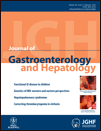Hepatocellular carcinoma in uremic patients: Is there evidence for an increased risk of mortality?
Abstract
Background and Aim
The clinical aspects of patients with hepatocellular carcinoma (HCC) undergoing maintenance dialysis are largely unknown. We aimed to investigate the long-term survival and prognostic determinants of dialysis patients with HCC.
Methods
A total of 2502 HCC patients, including 30 dialysis patients and 90 age, sex, and treatment-matched controls were retrospectively analyzed.
Results
Dialysis patients more often had dual viral hepatitis B and C, lower serum α-fetoprotein level, worse performance status, higher model for end-stage liver disease (MELD) score than non-dialysis patients and matched controls (P all < 0.05). There was no significant difference in long-term survival between dialysis and non-dialysis patients and matched controls (P = 0.684 and 0.373, respectively). In the Cox proportional hazards model, duration of dialysis < 40 months (hazard ratio [HR]: 6.67, P = 0.019) and ascites (HR: 5.275, P = 0.019) were independent predictors of poor prognosis for dialysis patients with HCC. Survival analysis disclosed that the Child-Turcotte-Pugh (CTP) provided a better prognostic ability than the MELD system. Among the four currently used staging systems, the Japan Integrated Scoring (JIS) system was a more accurate prognostic model for dialysis patients; a JIS score ≥ 2 significantly predicted a worse survival (P = 0.024).
Conclusions
Patients with HCC undergoing maintenance dialysis do not have a worse long-term survival. A longer duration of dialysis and absence of ascites formation are associated with a better outcome in dialysis patients. The CTP classification is a more feasible prognostic marker to indicate the severity of cirrhosis, and the JIS system may be a better staging model for outcome prediction.




